#Romano-Egyptian art
Explore tagged Tumblr posts
Text

Mummy portrait (wax encaustic on sycamore wood) of a girl, from the Fayum region of Egypt. Artist unknown; ca. 120-150 CE (reign of Hadrian or Antoninus Pius). Now in the Liebieghaus, Frankfurt am Main, Germany. Photo credit: Carole Raddato.
#history#ancient history#Ancient Egypt#Roman Empire#Roman Egypt#art#art history#ancient art#Roman art#Egyptian art#Romano-Egyptian art#mummy portrait#encaustic painting#Liebieghaus
3K notes
·
View notes
Text
2,000-Year-Old Fayum Portraits from Roman Egypt: also known as "mummy portraits," these funerary paintings were often fastened to the coffins of the people they depicted
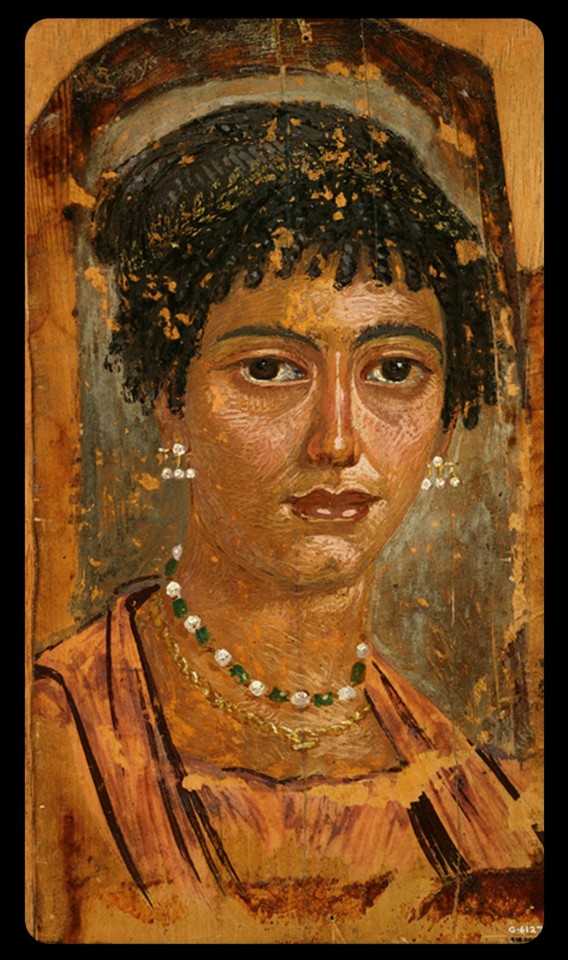
Above: Fayum portrait of a woman from Roman-occupied Egypt, c.100-110 CE
Fayum portraiture was a popular funerary practice among the upper-class families of Roman Egypt from about 50 CE to 250 CE. Given the high mortality rates for children during this period, many of these portraits depict children and youths, but adults were often featured, too.
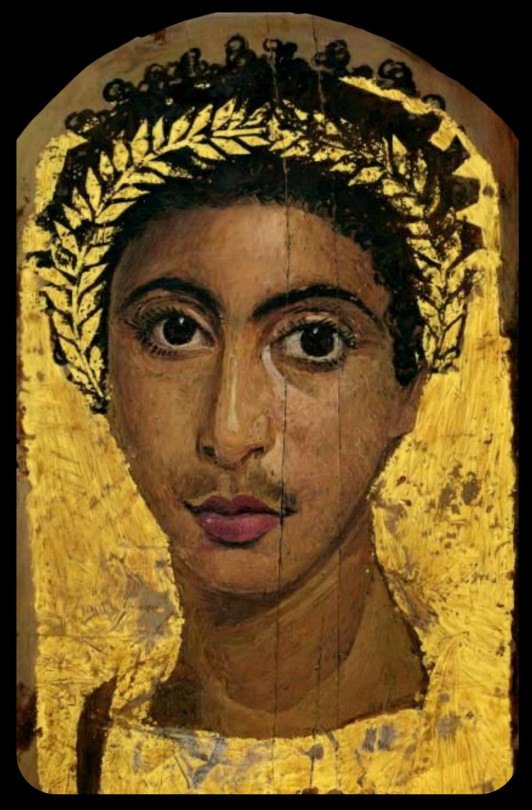
Above: portrait of a youth wearing a golden wreath, c.130-150 CE; the wreath and the background of the portrait are both gilded
The population of the Faiyum Delta, where most of these portraits were found, largely contained individuals with both native Egyptian/North African and Greek heritage. The Greek lineages can be traced back to the Ptolemaic period, when the Greeks gained control of Egypt and began to establish settlements throughout the region, gradually leading to a cultural diffusion between the Greek and Egyptian populations. The Romans eventually took control of Egypt in 31 CE, absorbing it into the Roman Empire and colonizing much of North Africa, but the demographics of the Faiyum Delta remained largely unchanged.
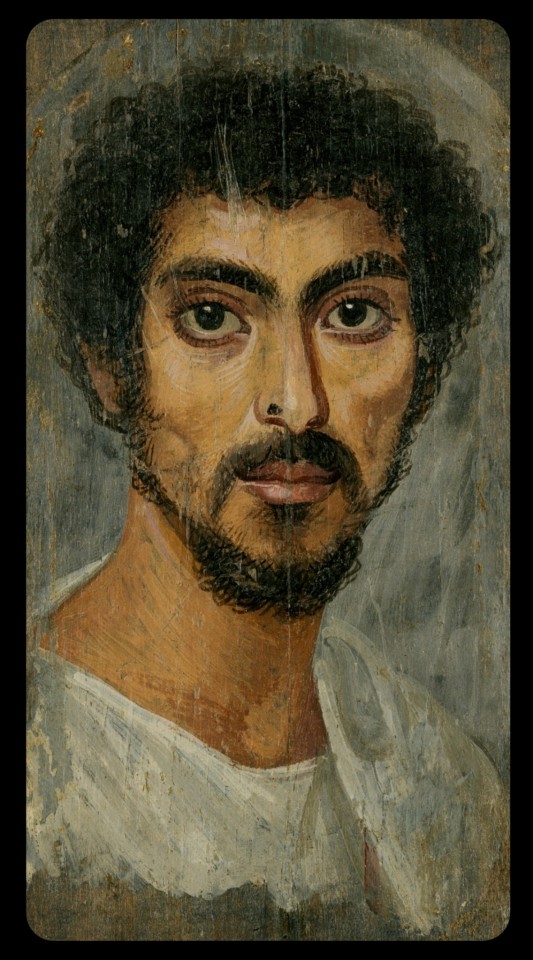
Above: portrait of a man with a mole on his nose, c.130-150 CE
Many of these Fayum portraits reflect the same blend of ethnic and cultural roots, depicting individuals with both Greek and native Egyptian heritage (a claim that is supported by both archaeological and genetic evidence). Some portraits may also depict native Egyptians who did not have any European ancestry, but had been integrated into Greco-Roman society.
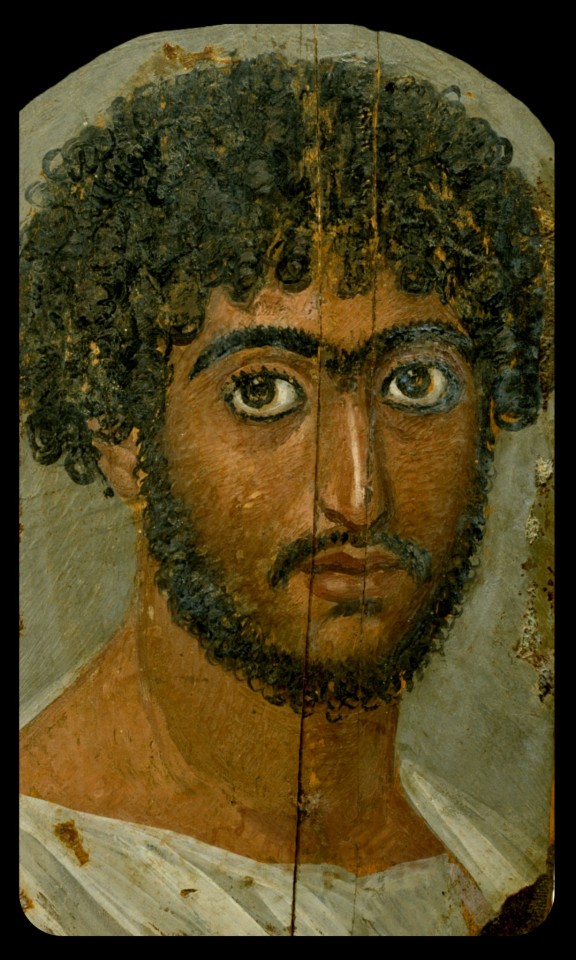
Above: portrait of a bearded man, c.170-180 CE
These representations of native Egyptians provide us with unique insights into the actual demographics of Roman-occupied Egypt (and the ancient world at large). Non-European peoples are rarely included in depictions of the classical world; it's also interesting to see the blend of cultural elements that these portraits represent.

Above: portrait of a priest of Serapis, c.140-160 CE; the man in this portrait is shown wearing a fillet/crown that bears the seven-pointed star of the Greco-Egyptian god, Serapis
As this article explains:
In the 1800s and early 1900s, Western art historians didn’t know what to make of these portraits. Scholars of Roman history labeled them Egyptian. Scholars of Egyptian history labeled them Greco-Roman. These binary academic classifications failed to capture the true complexity of the ancient (or, indeed, modern) Mediterranean. In reality, Fayum portraits are a syncretic form, merging Egyptian and Greco-Roman art and funerary practices. They reflect the cosmopolitanism of both Roman and Egyptian history.
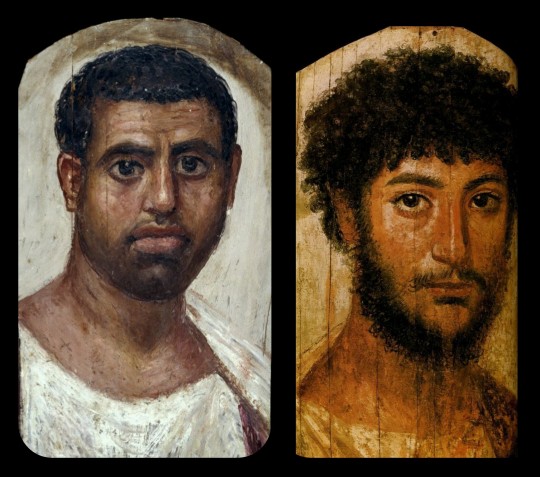
Above: portrait of a man, c.80-100 CE (left); portrait of a bearded officer, sometimes referred to as "Perseus," c.130-175 CE (right)
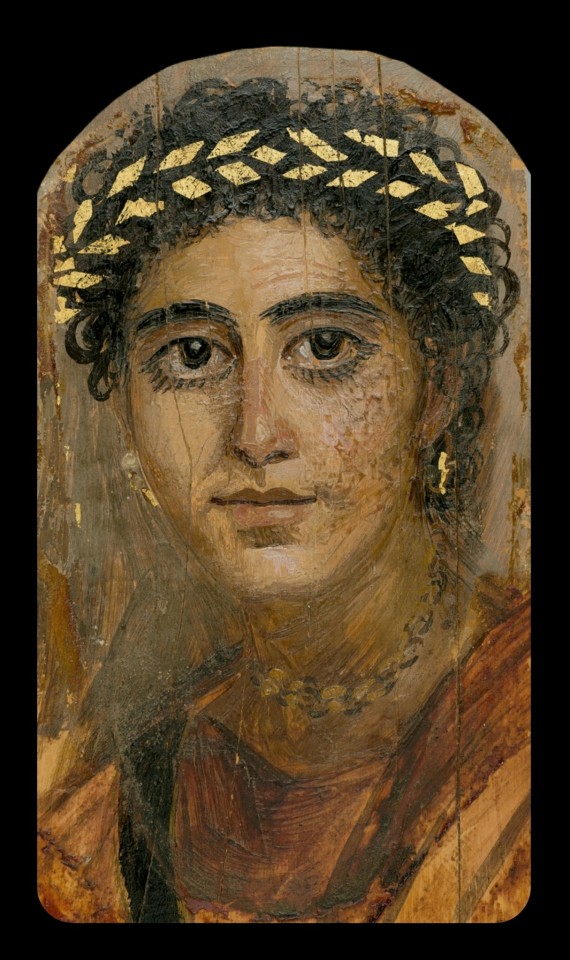
Above: portrait of a young woman in red, c.90-120 CE
Nearly 1,000 of these portraits are currently known to exist.
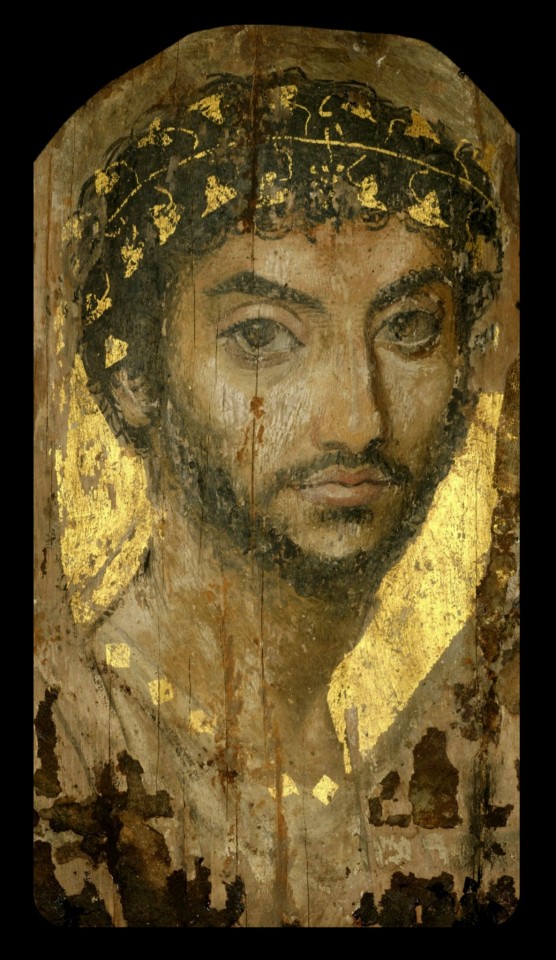
Above: portrait of a man wearing a gilded ivy wreath, c.100-150 CE
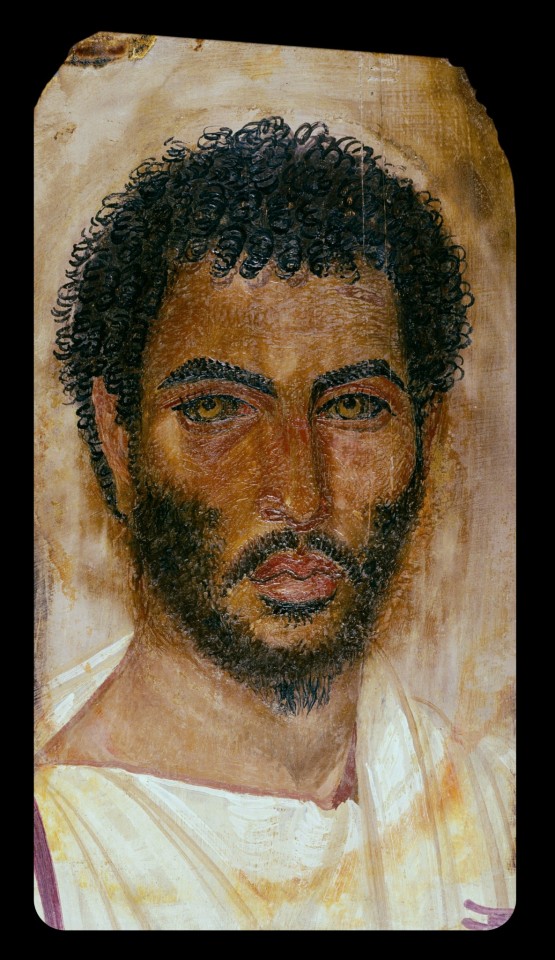
Above: portrait of a bearded man, c.150-170 CE
Sources & More Info:
Curationist: Fayum Portraits
Harvard Art Museums: Giving the Dead their Due: an Exhibition Re-Examines Funerary Portraits from Roman Egypt
Getty Museum: APPEAR Project
Getty Museum: Faces of Roman Egypt
National Geographic: Ancient Egypt's Stunning, Lifelike Mummy Portraits
The Athens Centre: The Myth of Whiteness in Classical Sculpture
Forbes: Whitewashing Ancient Statues: Whiteness, Racism and Color in the Ancient World
#archaeology#artifact#anthropology#history#ancient history#art#fayum portraits#roman egypt#ancient rome#ethnography#painting#portrait#north africa#people of color#egypt#religion#greco roman#greek#classical antiquity#fayum#mummy portraits#romano egyptian#representation
417 notes
·
View notes
Text


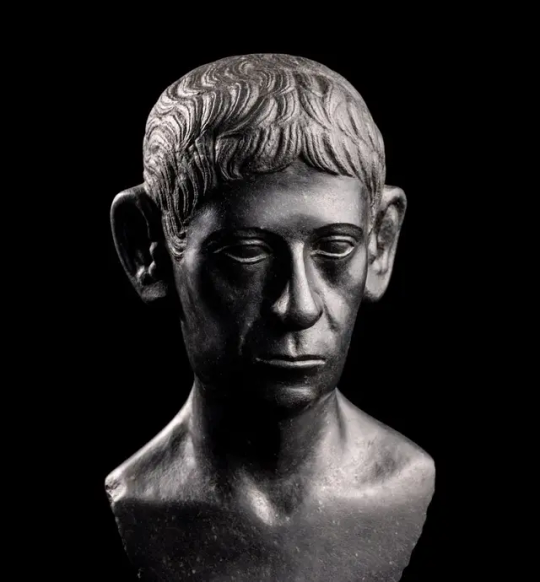
A Romano-Egyptian Black Basalt Male Portrait Bust Circa Late 1st Century B.C.-Early 1st Century A.D.
#A Romano-Egyptian Black Basalt Male Portrait Bust#Circa Late 1st Century B.C.-Early 1st Century A.D.#sculpture#bust#ancient artifacts#archeology#archeolgst#history#history news#ancient history#ancient culture#ancient civilizations#roman history#roman empire#roman art
105 notes
·
View notes
Text
Romano-Egyptian cartonnage mummy mask depicting a female head
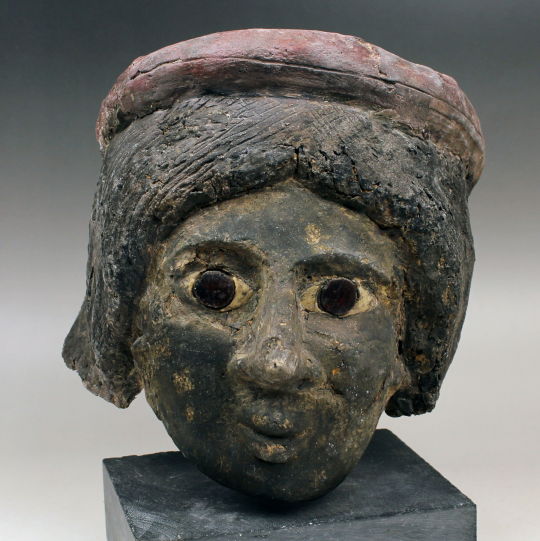
ITEM Romano-Egyptian cartonnage mummy mask depicting a female head MATERIAL Linen and Gesso CULTURE Egyptian, Roman period PERIOD 1st Century B.C – 1st Century A.D DIMENSIONS 208 mm x 200 mm x 200 mm (without stand) CONDITION Good condition PROVENANCE Ex English private collection, Ex Christie’s, London, April 2000, lot 59 (part lot), Ex Belgian private collection, Ex Bonhams During the Roman period in Egypt, which spanned from the 1st century BCE to the 4th century CE, a unique blend of Egyptian and Greco-Roman artistic influences emerged. This period saw the production of cartonnage mummy masks that often depicted female heads, showcasing a fusion of traditional Egyptian religious beliefs with the cultural impact of the Roman Empire. Cartonnage was a material made from layers of linen or papyrus soaked in plaster, creating a rigid surface suitable for painting and decoration. The female heads depicted on these mummy masks during the Roman period often reflected the idealized beauty standards of the time. These masks were not just functional elements for preserving the deceased's features, but also served a ritualistic and symbolic purpose. The depictions frequently incorporated Roman hairstyles and fashion trends, showcasing the blending of cultural elements. Read the full article
#ancient#ancientart#ancienthistory#artefact#artifact#ancientartifacts#antiquities#antiquity#art#artobject#ancientrome#ancientworld#history#classical#archaeology#roman#egyptian#romano-egyptian#mummy#sarcophagus#female#head#cartonnage
2 notes
·
View notes
Text
O Grande Museu Egípcio: A dádiva do Egito ao mundo e à civilização humana
O Grande Museu Egípcio é a maior galeria arqueológica do mundo dedicada a uma única civilização, narrando mais de 700.000 épocas da história egípcia antiga. O Grande Museu Egípcio é uma maravilha monumental que celebra a história, o presente e o futuro. O Egito tem bens e lugares mais antigos e, entre lugares e tomps e templos antigos, têm lugares e condicionamentos verdadeiramente bonitos, quer experimentá-los e se decidir experimentá-los, têm muitas passagens e mandatos especiais com um belo ponto de vista e passagens e informações instigantes tem de saber que não o vai configurar em nenhum lugar do mundo apenas no Egito estas passagens e mandatos que o fazem ver que exploram e muitos produtos que eles montaram que lhe vão mostrar muitos produtos que mostram o excelente Egito antigo e lugares bonitos, como a passagem do Nilo e muitas cidades bonitas no oceano vermelho, vai gostar muito em particular passeios pelo Egito incluem destinos turísticos populares como Cairo, Luxor, Assuão, Alexandria, Sharm El Sheikh e Hurghada , bem como passagens de um dia fresco que permitem testemunhar a cultura original incrível. Excursões em terra no Egito são organizadas a partir do Porto de Alexandria, Porto de Port Said e Porto de Safaga. Desfrutará dos elegantes períodos de cruzeiro no Nilo no Egito, paragem no Cairo e paragem no Egito para visitar os locais arqueológicos mais populares. A Cairo Top Company tem um grupo de motoristas profissionais elegantes que o ajudarão a organizar as suas férias no Egito da forma mais elegante possível. Os visitantes do Grande Museu Egípcio podem agora desfrutar de um exercício exclusivo de doze salas de exposição com uma curadoria rigorosa. Passeios de um dia do porto de Alexandria see one of the world's largest and most important galleries, the Egyptian Museum Tour, the magnific Giza Conglomerations, the Great Sphinx, which is a popular print position, and the open- air gallery located on the point where Memphis formerly ficou de pé. As principais galerias do GEM levarão os seus visitantes numa viagem literal excepcional através dos tempos antigos, desde o período neolítico (700.000 a.C.) até ao período romano (anúncio de cerca de 394). Port disse excursões em terra Testemunhar-se-á uma emulsão de sociedades coloridas, juntamente com incríveis paisagens colossais que vão desde o início da década de 1950 até à área antiga do antigo Egito. Os visitantes do GEM poderão ainda usufruir dos espaços acessíveis da galeria, incluindo o Museu das Crianças, auditórios ao ar livre e a zona comercial do GEM, que inclui cafés e lojas. as excursões de reforço do porto de Safaga oferecem excursões em terra exclusivas durante a noite do porto de Safaga para Luxor, onde os hóspedes podem explorar o magnífico Templo de Karnak e o magnífico Templo de Luxor, construído por Amenhotep III, um dos ditadores mais conhecidos e fenómeno no exemplificações requintadas da arte egípcia antiga e as decorações fascinantes que adornam as paredes maciças dos tabernáculos. apresentando marcas egípcias credenciadas. A icónica Pedra Suspensa recebe os visitantes à entrada da galeria. A pedra suspensa mostra a imaginação da antiga civilização egípcia ao projetar e esculpir monumentos. É o primeiro pátio de pedra suspensa do mundo. Excursões do porto de Sokhna Juntamente com o passeio islâmico ou copta pelo Cairo ou a grande igreja suspensa, que remonta ao boletim do século IV, o nosso pelotão também o leva ao agregado de degraus, às sepulturas de Saqqara e aos locais secretos e, claro, a Gizé conglomerados e esfinge. No interior do GEM, o majestoso Grande Salão alberga a estátua colossal do Rei Ramsés II, a Coluna de Palmeiras do Rei Merneptah e as estátuas de um rei e de uma rainha ptolemaicos – tesouros que ligam vivamente a história do Egito com o presente.
1 note
·
View note
Photo
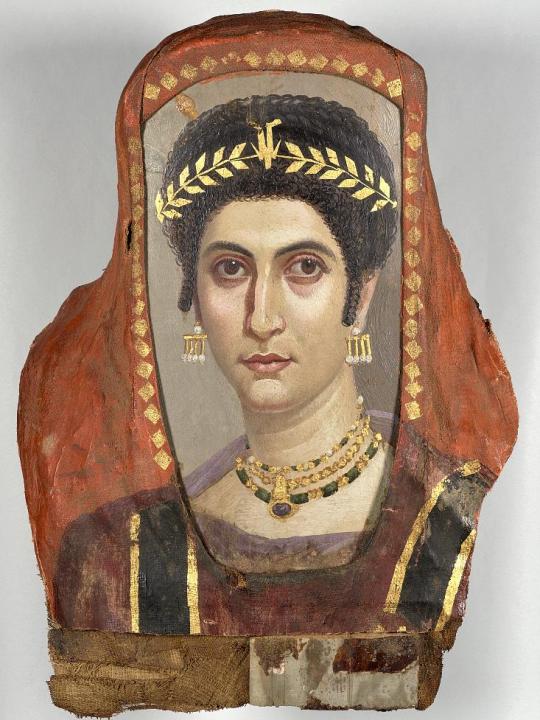
MWW Artwork of the Day (1/26/22) Attributed to the Isidora Master (Romano-Egyptian, active 100-125 CE) Mummy Portrait of a Woman (100 CE) Encaustic on linden wood & gilt on linen, 48 x 36 x 12.8 cm. The J. Paul Getty Museum, Los Angeles
Scrupulously painted in encaustic wax and enlivened with gilding, every aspect of this Romano-Egyptian portrait identifies its owner as a person of substantial wealth and social position. Isidora’s impressive earrings are distinguished by their unique size and luxurious materials. They consist of a horizontal gold bar suspended from a single pearl; itself suspending four gold vertical bars and each terminating in a pearl. She wears three necklaces connected at the front by an amethyst set into an elaborate gold mount. The topmost necklace appears to be of emeralds, pearls and gold beads, gems characteristically worn by elite women at this time.
For the complete set of 56 Faiyum portraits, visit this MWW Special Collection: * Ancient/Medieval Art Gallery vanity=TheMuseumWithoutWalls&set=a.419770264795015
91 notes
·
View notes
Text

~ Mummy Portrait of a Man.
Culture: Romano-Egyptian
Place of origin: Egypt
Date: A.D. 100–125
Medium: Encaustic on wood
#ancient#ancient art#history#museum#archeology#ancient egypt#ancient sculpture#roman#ancient history#archaeology#mummy#mummy Portrait of a man#portrait#fayum#Romano-Egyptian#a.d. 100#a.d. 125
405 notes
·
View notes
Photo
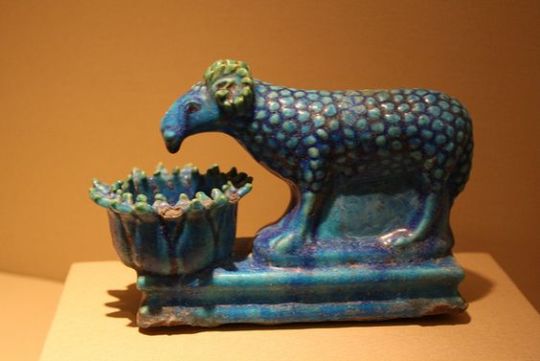
A Romano-Egyptian Faience Sculptural Group: Ram with Manger in the Form of a Lotus
Faience, Roman Period, ca. 2nd Century C.E., From Fayum (Medinet el-Fayum)
This charming ram, with its almost prehensile muzzle, feeds from a lotus-form trough. The traditional Egyptian gods Amun of Khnum were identified with curly-horned rams, but by this time several other divinities were as well. In terracotta statuettes and on coins Harpokrates can be seen riding a ram or sitting upon a lotus flower, the latter symbolic of rebirth. Perhaps this faience composition alludes to Harpokrates, who was an immensely popular god of fecundity and rebirth during the Roman era.
With the two faience masks on display with this sculptural group, the ram is said to have been part of a find of numerous faience objects at Arsinoe, capital of the Fayum region.
From the collection of the Metropolitan Museum of Art, New York.
#ancient egyptian#faience#figurine#2nd century#egyptian#romano-egyptian#sheep#ram#religious art#ceramic
17 notes
·
View notes
Photo

Romano-Egyptian "mummy portrait" of a bearded man, circa 150-170 CE. A diverse range of elites would either mount such paintings to the front of their coffin or wrap them into their bandages. Getty Villa. Pacific Palisades, CA.
40 notes
·
View notes
Photo

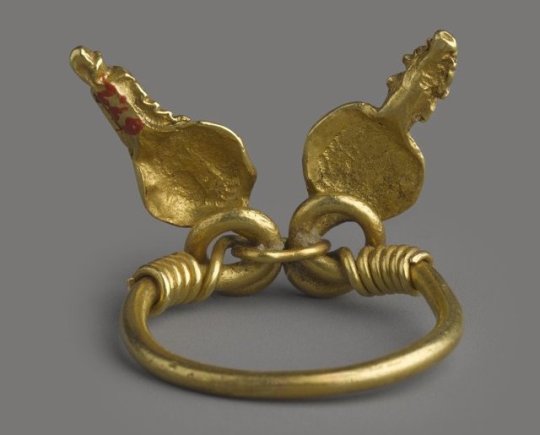
Gold finger ring
Egyptian, Roman Period, probably 2nd century A.D.
Brooklyn Museum
#Ancient Egypt#Roman Empire#Roman Period#ancient art#ancient jewelry#art#gold#ring#finger ring#jewelry#Egyptian#Romano-Egyptian#Brooklyn Museum
401 notes
·
View notes
Photo

‘Portrait of a Bearded Man from a Shrine’ ( Egypt, A.D. 100 ).
Tempera on wood. Artist unknown.
Image and text information courtesy The Getty.
This image is available for download, without charge, under the Getty's Open Content Program.
28 notes
·
View notes
Text
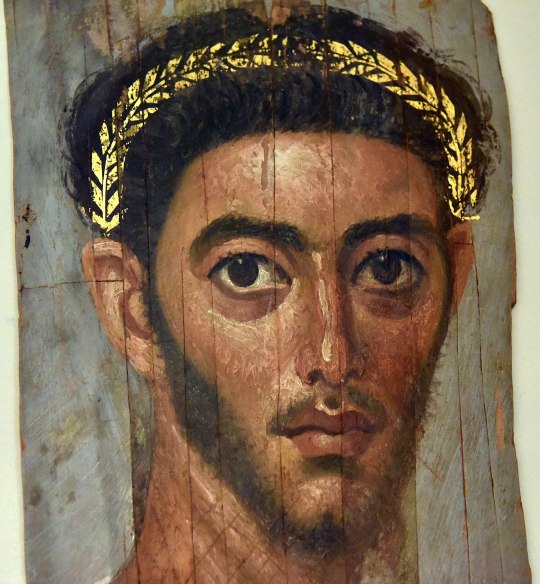
Egyptian mummy portrait (encaustic on wood) of a Roman soldier wearing a gold wreath. Artist unknown; ca. 130 CE (reign of the emperor Hadrian). Found at er-Rubayat in the Fayum; acquired in 1927 and now in the collection of the Altes Museum, Berlin. Photo credit: Osama Shukir Muhammed Amin FRCP/Wikimedia Commons.
#classics#tagamemnon#Ancient Rome#Roman Empire#Egypt#Ancient Egypt#Roman Egypt#Greco-Roman Egypt#portrait#portrait painting#mummy portrait#art#ancient art#Roman art#Ancient Roman art#Roman Imperial art#Egyptian art#Ancient Egyptian art#Romano-Egyptian art#Fayum#Altes Museum#encaustic#encaustic on wood
328 notes
·
View notes
Photo

Snake Bracelet // Artist: Unknown // Date: 100 BC-100 AD // Material: Gold
10 notes
·
View notes
Photo
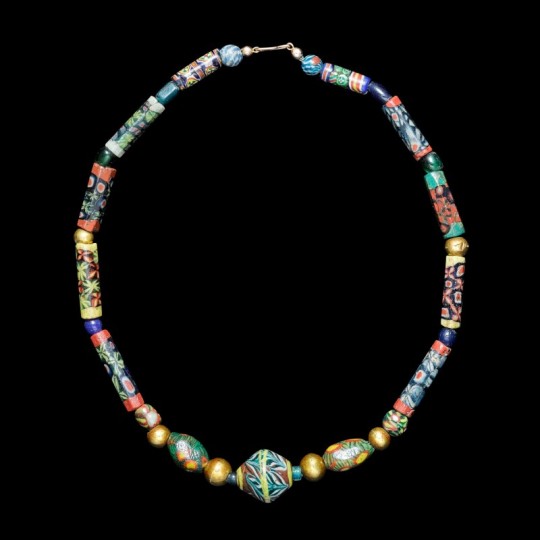
A Romano-Egyptian Group of Millefiori and Mosaic Glass Beads Circa 1st Century B.C./4th Century A.D.
Strung as a necklace, including faceted cylindrical beads with floral motifs, two ovoid beads with opaque yellow and red eyes in a translucent green matrix, and a large biconical bead with feather pattern, the gold spacer beads probably of later origin.
Length 43.2 cm.
#A Romano-Egyptian Group of Millefiori and Mosaic Glass Beads#Circa 1st Century B.C./4th Century A.D.#art#artist#art work#art news#jewelry#ancient jewelry#roman jewelry#egyptian jewelry#history#history news#ancient history#ancient culture#ancient civilizations#roman history#roman empire
54 notes
·
View notes
Text
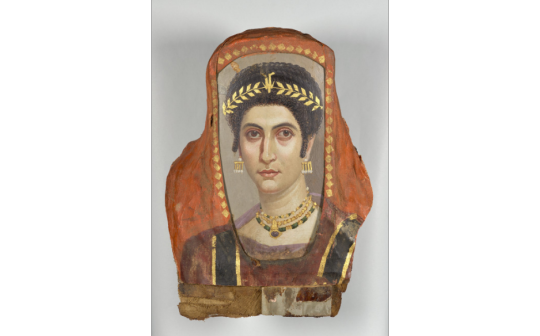
Mummy Portrait of a Woman
An inscription in Greek gives her the name of ICIΔOPA (Isidora), and she would've been of high social and economic standing, as indicated by both her attire and the care, effort, and material used when creating this portrait.
Romano-Egyptian, 100 CE.
#this was created in egypt#btw!#ancient egypt#egyptology#egyptian history#romano-egyptian#roman history#ancient rome#ancient history#history#artifact#classics#greek#ancient art#anthropology#archaelogy#leguinian
0 notes
Photo

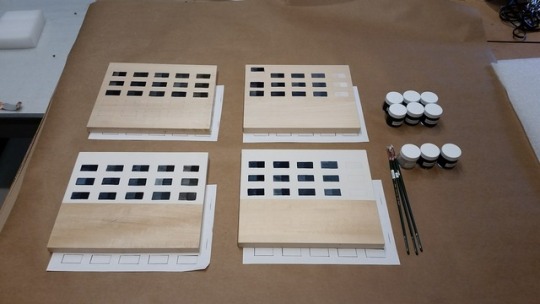
Over the last few weeks, pre-program conservation interns Natasha Kung and Meredith Menache have been making custom paint swatches according to historic procedures. Although the tools they use are up to modern standards of practice – their gloves, masks, and clean glass beakers, for instance – the paint materials themselves and the methodology used are similar to those of artists making Romano-Egyptian funerary portraits (fayum portraits) about 2000 years ago. Dry pigments are mixed with water for form a paste then blended with a binding medium. Natasha and Meredith apply each type of paint mixed to a board that has also been prepared using historic materials and practices.
Conservators are particularly interested in paint made with indigo for this project. Since indigo was often used in a mixture with other pigments (adding orpiment makes green; adding madder makes purple), each board of paint outs that Natasha and Meredith create includes indigo mixed in different proportions with a different historic pigment. So far they have worked on mixtures with vine black and with gypsum. The binding media for the paint is also varied to include the range of options found on the Brooklyn Museum’s fayum portraits: each board will show the pigment mixtures applied using three different types of animal-based glue and two different types of wax.
The goal of this highly methodical process is to learn more about one of the analytical imaging techniques recently adopted at the Brooklyn Museum, used in the characterization of indigo. Studying known mixtures of indigo in a variety of binding media on these boards will help conservators know what information is most reliable when studying the fayum portraits using the same imaging techniques. In the next few months, conservators and interns will complete these paint outs and conduct the imaging. Stay tuned for the progress of this project!
Posted by Jessica Ford
#bkmconservation#conservation#art conservation#art conservators#conservator#painting#paint#swatches#fayum portrait#ancient#romano-egyptian#funerary#indigo#orpiment#science#art#highlight
45 notes
·
View notes